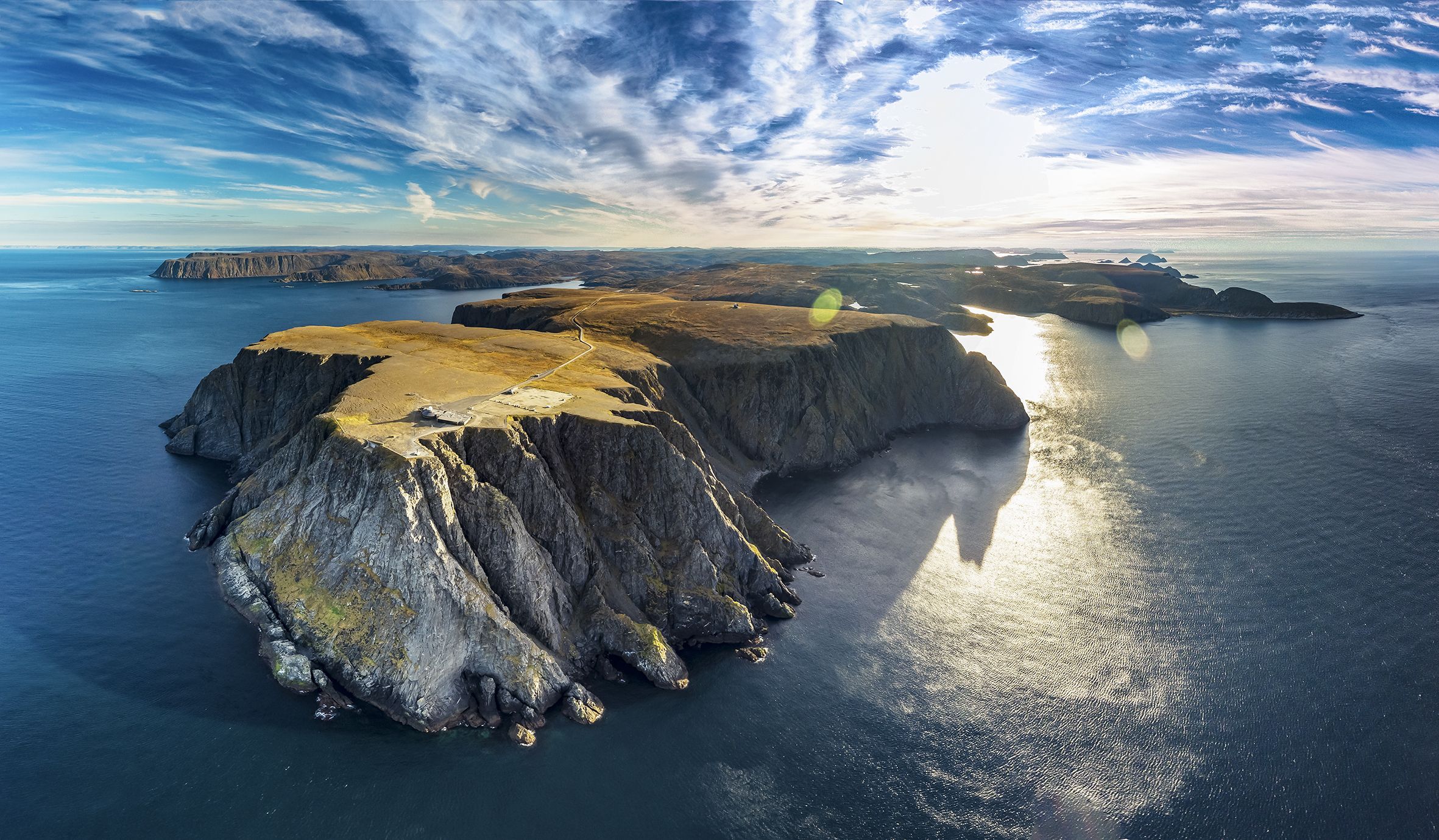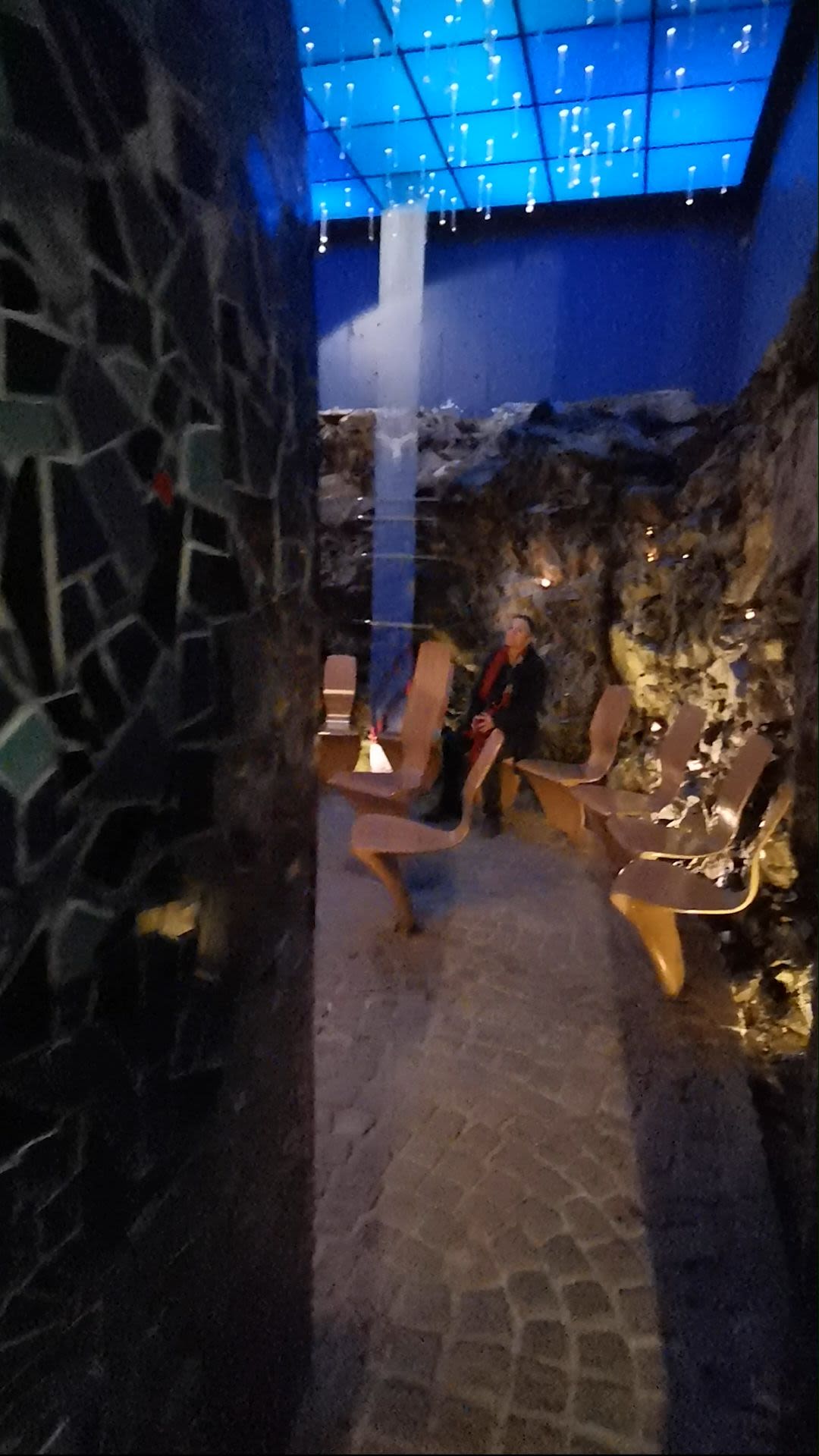"Here I am at the North Cape, at the edge of Finnmark, and I dare say the very edge of the world”, wrote North Cape’s first tourist. I have now been there myself – and the story of that adventure is worth telling.


A Journey to the
Edge of the World
Text: Josefine Spiro

A Journey to the
Edge of the World
Text: Josefine Spiro

In 1553, three British ships set out on an expedition to find the northeastern passage to China. Two of them were forced off course in a storm just outside Lofoten, north of the Arctic Circle. The crew tried to survive the long, hard winter on the deserted Murmansk coast, but none did.
The third ship, “Edvard Bonaventure”, ended up near the Arkhangelsk coast in Russia. The captain, Richard Chancellor, made it to Moscow in a sled, and from there, he made it safely home to England.
Captain Chancellor didn’t find the sea route to China, but before ending up in Russia, he did discover something else: A cliff “at the edge of the world”, rising 307 meters straight up from the Arctic Ocean. He named it “North Cape”.
Honningsvåg

The wooden installations that come into view on our left as the tour bus leaves the harbour in Honningsvåg are somewhat a remarkable sight. To me, they resemble bare, wooden cabins with neither roofs nor walls, completely exposed to the elements. But they are not cabins; they are drying racks for fish, and from January through March they are filled with cod. After eight to ten weeks, the fish is completely dry and ready to get exported throughout the world. Just like clipfish (salt cod), dryfish is considered a special Norwegian delicacy.
The young female guide at the front of our bus explains to us how it all works. Her English is impeccable, but Italian is her native language. She’s switching effortlessly between the two languages, not seeming the least stressed by the time pressure she’s under to share a large amount of information on our journey from Honningsvåg to the North Cape Plateau.
With close to 2400 inhabitants, Honningsvåg is in fact too small to call itself a city. In Norway, a town can only do so if the municipality it is located in has at least 5.000 inhabitants. North Cape holds less than 3.000 people. Nevertheless, it does have the status as a real city, only because the municipal council decided so in 1996. Not only did Honningsvåg become a city; it became the northernmost city of Norway – and the fourth northernmost city in the world.
Just before our bus driver is leaving Nordkappveien (the North Cape Road) to E69 (European road 69), the guide directs our attention to a grocery store on our left. It is nothing out of the ordinary; in fact, there are at least two other similar stores in town. Still, this particular shop is singled out as interesting. Why? Because it’s located at exactly 71 degrees North! ("71 Degrees North" is the name of a popular, long-time reality series throughout Europe).
We are on Magerøya (meaning “the skinny island”) – the largest island in the municipality of North Cape. The name explains itself: As soon as we leave Honningsvåg, the landscape shows “its true self”.
There are few trees around, and the ones we can see are small. Some hardy flowers are clinging to the rock wall on both sides of the road. Supposedly, more than 20 different species of plants are growing in the area, and during the season we can even find lots of blueberries, raspberries, and mullets.
Suddenly, the bus slows down, and the guide interrupts herself in the middle of a sentence:
“Look, reindeer on the left!”, she exclaims.
The Nordic animal is grazing next to the road, just a few meters from the bus. Several of the passengers shout out in excitement – wow, we saw a real reindeer! Little do they know that very soon we will spot many more magnificent specimens of the spectacular animal out on the mountain plains. Nowadays, there are reindeer everywhere on this island – over 6000, to be more precise. They belong to the Sámi people and were transported here by boat in the month of April.

Reindeer on Magerøya. Photo: Arno van den Tillaart
Reindeer on Magerøya. Photo: Arno van den Tillaart
“The Sámi people keep their reindeer on Magerøya during the summer season”, says the guide.
The Sámi are the native population – the indigenous people – in the northernmost part of Scandinavia.
“In September, the Sámi will travel all over the island to find and collect the reindeer once more. Typically, they use ATVs (all-terrain vehicles), or – if there’s snow – snowmobiles while herding”, the guide explains.
In October, the Sámi bring their reindeer back to the mainland.
Just North of Honningsvåg, we pass a small fjord called “Skipsfjorden” (The Ship Fjord).
In the picture, you see “Trollholm” (Troll Islet) in Skipsfjorden.
The name “Skipsfjorden” comes from the fact that it used to be an emergency port, especially during storms: The fishing boats came here to find shelter. Back in the days, fishing was a dangerous profession, and according to our guide, 20 percent of the fishermen died at sea. Fortunately, they have much better navigation and safety systems at present.
“Most men in Honningsvåg work as fishermen, bus drivers – or both”, says the guide.
On our way up to the final destination of this excursion, we pass several interesting sights, such as two tandem bicycles (which apparently is a common scene in North Cape during the summer), the world’s northernmost fishing village, Skarvåg (which, according to our guide, just has 45 inhabitants), a Sámi summer camp, a hotel, and a small archipelago which is a nature reserve for sea birds.
But at last, we are here – on the North Cape plateau. Is this the edge of the world?
"Here I am at the North Cape, at the edge of Finnmark, and I dare say the very edge of the world since there are no other places further north inhabited by man. This affirmation has now been fulfilled to my satisfaction, and I will return to Denmark and, if God permits, to the land of my birth”.
These words were written by Francesco Negri, the first tourist to ever set foot on North Cape. He was an Italian priest and a scientist who visited North Cape as early as in 1664. Afterwards, he wrote the manuscript “Viaggo Settentrionale”, consisting of eight travel narratives.
Since then, North Cape has been an attraction to millions of tourists from all over the world.
We have plenty of time to explore the area.
Most of us go straight to the iconic globe, symbolizing that this is an international meeting point, positioned almost at the far end of the North Cape plateau. It is also a sought-out photo spot.
Just like everyone else, I feel the need to preserve this moment in a photograph.
The North Cape Hall. The impressive building is partly built into the rock cliff, and on the inside we find both a restaurant with a sky wide view, a souvenir shop, and a cinema theater with a 180 degree film screening of the North Cape throughout the four seasons. The building even holds a Thai museum and a chapel.
Many had expressed that they wanted a religious meeting point on the North Cape, so in 1990, the St. Johannes Chapel was built. It is the northernmost chapel in the entire world.

Many had expressed that they wanted a religious meeting point on the North Cape, so in 1990, the St. Johannes Chapel was built. It is the northernmost chapel in the entire world.
Many had expressed that they wanted a religious meeting point on the North Cape, so in 1990, the St. Johannes Chapel was built. It is the northernmost chapel in the entire world.
Because the people who meet at North Cape represent different denominations all over the world, the St. Johannes Chapel is ecumenical; an interdisciplinary chapel. This means that everyone, regardless of their beliefs, should be able to find peace for reflection and meditation in this special room.
The chapel has three symbols: Christ, the cross, and the dove; the only symbols upon which all the Christian denominations can agree.
Many of us take our time to study the art installation outside The North Cape Hall: A statue of a mother and child pointing to seven large bronze reliefs.
There’s a special story behind this work of art.
In 1987, a well-known Norwegian author, Simon Flem Devold, came up with the idea to bring children from different nations and cultures together at North Cape and “let them create a lasting expression of youthful understanding, cooperation, and joy - uninhibited by national, racial, religious or political boundaries!”
(Source: https://www.barnavjorden.org/)
One year later, seven children met at North Cape: Jasmine from Dar-es-Salaam, Tanzania, Rafael from Rio de Janeiro, Brazil, Ayumi from Kawasaki, Japan, Sithidej from Bangkok, Thailand, Gloria from Jesi, Italy, Anton from Murmansk, the (former) Soviet Union, and Louise from New York City, USA. From the very beginning, they were called The Children of the Earth.
This is how the humanitarian project, “Children of the Earth” began, and each year since 1989, it has presented a prize to “an individual or a project which, over time, has demonstrated compassion and ability to help children that suffer somewhere in the world”.
The very first The Children of the Earth Prize of 100.000 NOK (about 9.021 EUR) was presented to Inger Harrington of Ålesund, Norway. It enabled her to start her dedicated and long-term work among street children in Brazil. In 2010, the amount of the prize increased to NOK 150,000.
During the annual award ceremony, approximately 500 students in North Cape get the day off from school to gather in the North Cape Hall.
You can read more about this excursion to the North Cape plateau here.
Other Excursions in Honningsvåg/North Cape
Magerøya Island ATV Winter Safari (Winter)
ATV-safari på Nordkapp-platået (Summer)
Art nouveau walk
Birdwatching near North Cape
Snowshoeing and ice fishing in the Arctic (Winter/Spring)
Breakfast at the North Cape Plateau
In the next and last travel letter in this series about experiences from my first trip with Havila Voyages, I will tell you about our visit with a Sámi family. We received good insight into Sámi culture and traditions. By the way, they have a tame reindeer calf!

